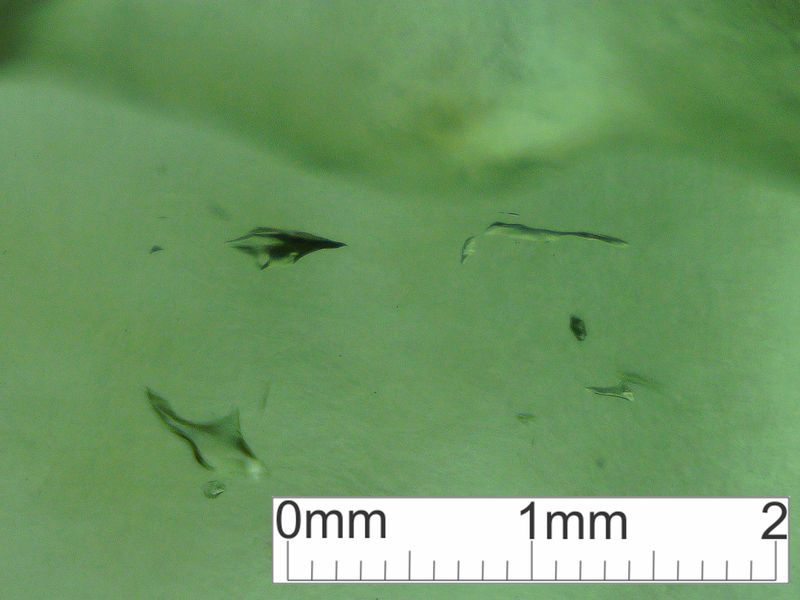Craig Hagstrom
Joined: 10 Jan 2025
Posts: 19


|
 Posted: Jun 10, 2025 21:28 Post subject: Re: Libyan Desert Glass Structure Posted: Jun 10, 2025 21:28 Post subject: Re: Libyan Desert Glass Structure |
|
|
Here's a totally fascinating development. I have a couple pieces that in my last pdf I said were good candidates for having chains of sand grains, based on their overall shapes. I ground a flat on each of them and am finding these terrific bubbles.
If these bubbles formed in molten glass they might be round, they might be teardrops, they might (if the molten glass flowed) be elongated. But this are none of those things. The best explanation is that these are air left in the interstices between sand grains. That means this material was never molten. As I've conjectured, this formation implies the solid grains were wetted by fluidized silica wicking into the unmelted sand. This is the fingerprint of beta radiation.
When the fluid silica flowed into the sand, some air couldn't get out of the way. There are some tiny bubbles, but two of these images show air bubbles about a quarter inch across, with much of the volume filled by sand. The sand itself is invisible here, so you're seeing only the interstices. You might have to hold your mouth right before it starts to make sense. :)
This is further evidence that this material was never molten. Melted sand has the consistency of honey, more or less. But beta-radiation fluidized silica seems to have a viscosity closer to water.
If there is an alternate explanation for this formation, I'm very interested in hearing it.
| Description: |
|
| Viewed: |
73 Time(s) |

|
| Description: |
|
| Viewed: |
73 Time(s) |

|
| Description: |
|
| Viewed: |
73 Time(s) |

|
|
|





